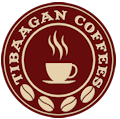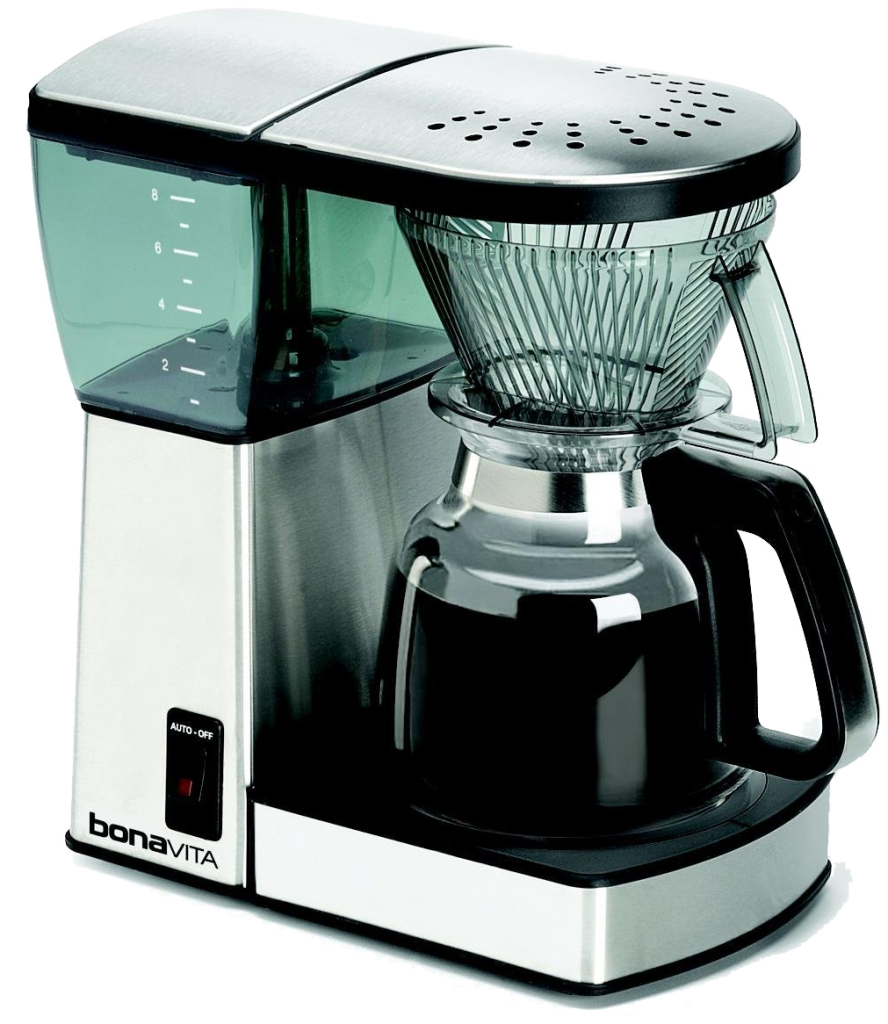 Drip Coffee Makers
Drip Coffee Makers
They come in all shapes and sizes and and have a variety of built in features. You want one that will heat the water to 200 degrees and will drip the coffee in 8 minutes. They vary in price and more expensive does not always mean better. Do your research as a good coffee maker can make the difference between an okay cup of coffee to a perfect cup of coffee.
Start the Process Right: Whole Beans, a Good Grind, Filtered Water, and the Right Temperature
Since a drip coffee maker already handicaps the flavour a little, it’s really important to get fresh beans. If you’re fortunate enough to have a good local roaster near you it’s worth getting your coffee from them because it’s almost always guaranteed fresh. Coffee goes stale quickly and the process goes even faster when the beans are already ground, so stick with whole beans. If you’re stuck with a grocery store brand be sure to look for a roasting date on the package so you can get something fresh-ish.
If you do have a local roaster where you can buy beans directly it doesn’t hurt to ask if they have any coffee blend recommendations for an auto-drip coffee maker. They’ll at least be able to steer you toward roasts that might work better with less flavour loss. Tibaagan Coffees recommends a medium roast because a light roast can lose too much flavour and dark will be too strong.
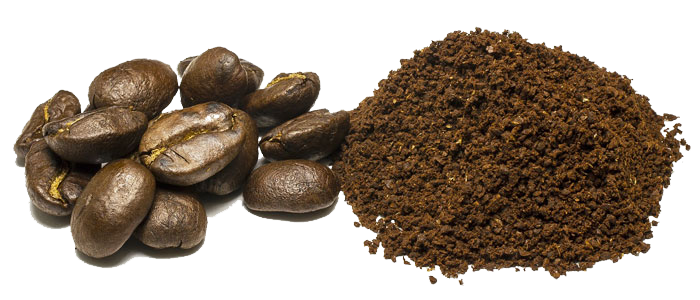 Coffee gets its flavour and aroma during a process called extraction when the hot water passes through the ground up beans. If this happens too quickly, the coffee will be weak; if it happens too slowly, it will be bitter. The speed of this is decided by the grind of the coffee and filters used.
Coffee gets its flavour and aroma during a process called extraction when the hot water passes through the ground up beans. If this happens too quickly, the coffee will be weak; if it happens too slowly, it will be bitter. The speed of this is decided by the grind of the coffee and filters used.
For most auto drip coffee makers you want a fine or medium grind depending on the type of filter your coffee maker uses.
Flat Bottom Filters: Medium (close to the texture of sand).
Cone Shaped Filters: Medium/Fine (A little finer than granulated sugar).
Gold/Plastic Permanent Filters: Medium.
It might take a little experimenting to get the right grind. If your coffee is too bitter, try a coarser grind. If it’s lacking flavour, try a finer grind.
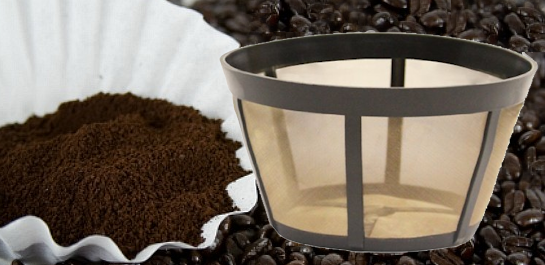 Water & Temperature
Water & Temperature
All drip coffee maker are units that store water in a reservoir before you start brewing. You can use the carafe to measure out the amount of water you want to use and pour it into the tank on the top of the device. These tanks range in size. They store enough water to prepare a full pot of coffee, but you don’t need to completely fill the reservoir for the process to work. These coffee makers store water in the reservoirs until you activate the machine and start brewing.
If you look inside the reservoir before you add water, you will notice a small hole in the base. Water drains through this hole and into a tube. From there, it enters the bottom of the coffee maker. The water stays inside its tube while it runs past a heating element. The water reaches a boiling temperature there, and air bubbles force it up the tube to the top of the device.
Once the heated water reaches the top of the coffee maker, it drips out onto ground coffee beans. It drips constantly, soaking the beans and finally through the filter before entering the carafe below. During the drip process, the coffee maker uses the heated water to extract all the flavour the roasted beans have to offer.
You want a drip coffee maker that heats the water to 200 degrees Fahrenheit and the coffee drips through in about 8 minutes.
Glass vs. Thermal Carafes
Not all of the drip coffee makers have the same style of carafe. Some units use glass to hold the heated brew. Others use thermal containers. Both of these styles come with their own benefits, and it’s up to you to decide which you prefer.
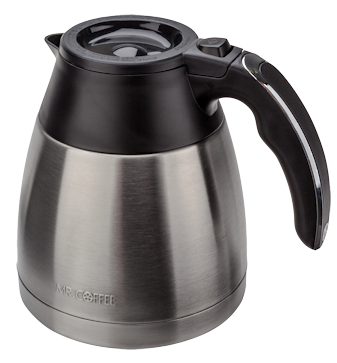 Thermal Carafes
Thermal Carafes
Coffee makers with thermal carafes use an insulated design to keep your beverage warm. The brewed coffee retains heat better in this style of carafe. It loses heat at a slower rate than a glass carafe, and it does not come with a heated base plate. Those who prefer thermal coffee carafes often want to enjoy coffee over the course of several hours. The finished brew can sit in the pot for longer periods without getting cold. Appliances with thermal coffee carafes do not need to run once the brewing process finishes. Instead, they rely on simple design elements to trap heat for as long as possible. These containers rely on insulation, usually with some sort of stainless steel body, to retain heat.
Glass Carafes
 Coffee makers with glass carafes usually sit on heated plates to maintain warmth. This container style appears commonly in home appliances for a few different reasons. Glass coffee carafes visibly show you how much coffee has brewed. You can watch as the dark liquid fills the container. Coffee machines with these types of carafes also tend to benefit those who want to enjoy a cup of coffee before work. Especially when the brew does not need to sit around for long before the machine shuts off.
Coffee makers with glass carafes usually sit on heated plates to maintain warmth. This container style appears commonly in home appliances for a few different reasons. Glass coffee carafes visibly show you how much coffee has brewed. You can watch as the dark liquid fills the container. Coffee machines with these types of carafes also tend to benefit those who want to enjoy a cup of coffee before work. Especially when the brew does not need to sit around for long before the machine shuts off.
Thermal coffee carafes sustain heat levels for longer, but glass coffee carafes can make for faster cleanup. In many cases, you can use the top rack of your dishwasher to clean glass. Thermal containers usually require more delicate hand washing. If you choose to use a glass coffee pot, check for automatic shut-down features that prevent the unit from overheating. Base plates that do not turn off automatically can burn the leftover coffee and make cleanup more difficult.
The below video has some good information about brewing coffee.

